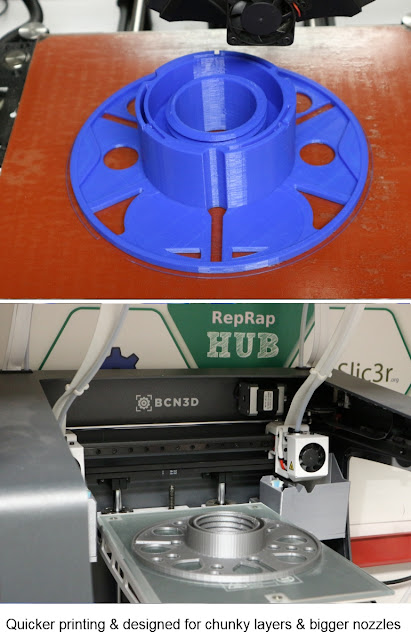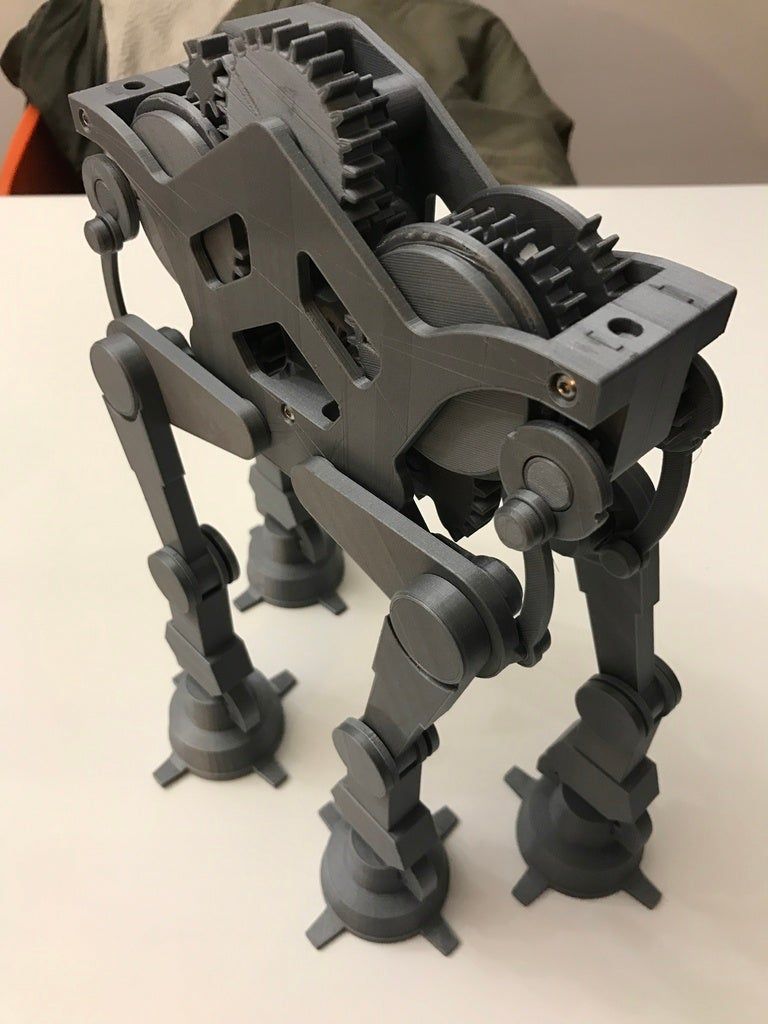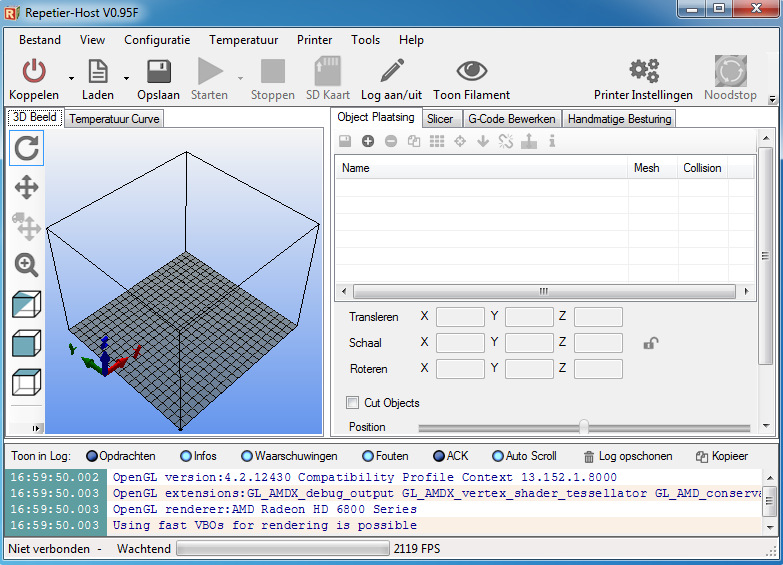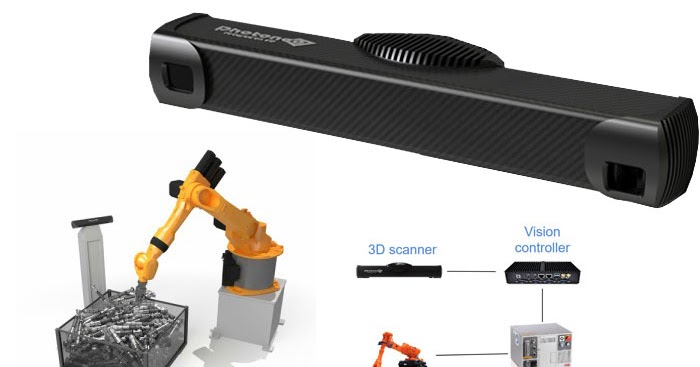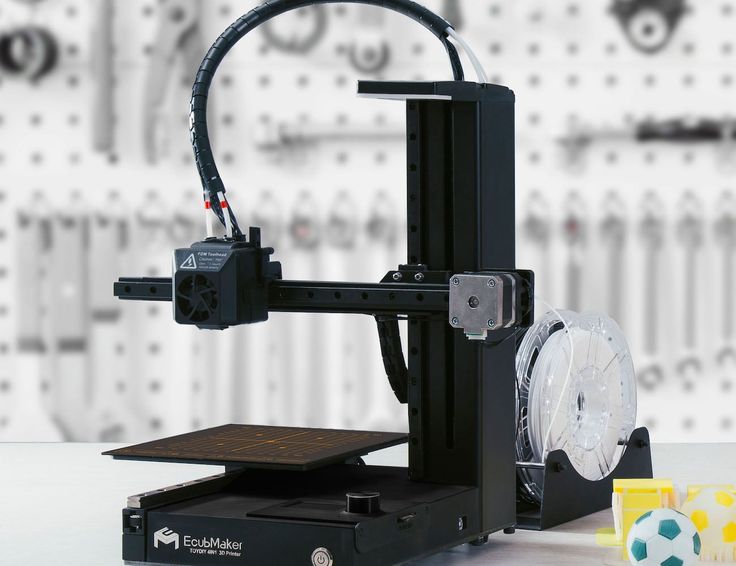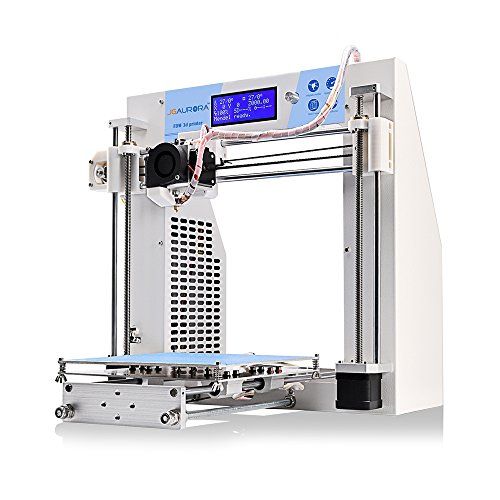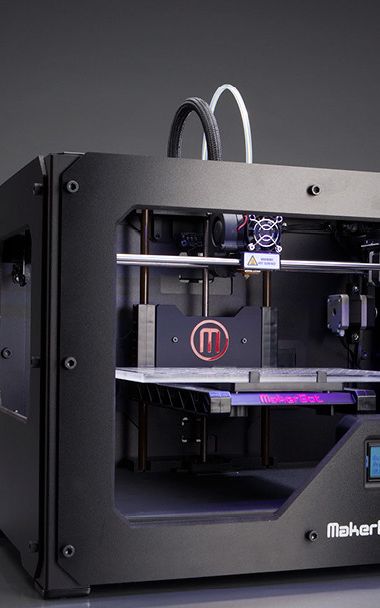3D printing using hdpe
The Fall and Rise of HDPE 3D Printing Filament
High Density Polyethylene (HDPE) has had a remarkable fall from grace. Once considered the future of 3D printing and a frontrunner of polymer additive manufacturing, it has fallen by the wayside in recent years. But is there any way back for this ubiquitous pioneer?
The History of HDPE 3D Printing
Even if you are not familiar with the name HDPE, you have certainly encountered it. It is estimated that HDPE accounts for around 40% of the world’s total plastic production. And that is in no small part due its many useful properties.
Not only is it extremely cheap to mass produce, but it is a lot stiffer and sturdier than its sibling, Low Density Polyethylene (LDPE). It does not degrade or corrode, has a high melting point, is waterproof, food safe, recyclable, and most crucially, when it malfunctions it does not shatter and leave sharp edges, but instead bends or tears.
These factors make HDPE the ideal plastic for everyday domestic use. The plastic milk bottle you bought from the supermarket today? That was HDPE. The plastic bag you used to carry it to the car? HDPE. It is used to make outdoor furniture, heavy-duty trash bags, chemical-resistant piping and cladding, fireworks, fuel tanks, mannequins, and the list goes on.
Seemingly, you cannot move for seeing HDPE somewhere, and the high turnover rate of certain HDPE products mean that there is always high demand for more. This is one of the reasons why it became such a focus of polymer 3D printing.
One of the most exciting elements to the democratization of 3D printing is the ability to make everyday goods yourself. With HDPE being such a fixture of our everyday lives, it was natural to experiment with 3D printing HDPE. It was expected that it would be a gateway material in driving low-cost 3D printing.
The Beginning of the End for HDPE
However, tragically, it soon began to fall out of favor with the 3D printing community. HDPE filament’s high melting point was a double-edged sword, as it required vast amounts of heat to print effectively. It also meant the parts shrunk after printing, a high potential for warping, and its lack of dependable bed adhesion.
It also meant the parts shrunk after printing, a high potential for warping, and its lack of dependable bed adhesion.
Soon, other materials like Polylactic Acid (PLA) began to emerge, with near identical properties, but with much less demand on heating and aftercare, as well as being much easier to 3D print. HDPE became all but obsolete, and soon faded from the conscience of the community.
While HDPE is still a favorite with traditional plastic manufacturers, and still in wide use, 3D printing has all but given up on this former titan of the industry. And this strange disconnect has left many wondering whether there is a way to bring it back for one more round.
Getting the Best Results from HDPE 3D Printing
- Nozzle Temperature: 200°C-260°C
- Bed Temperature: 100°C-130°C
HDPE filament is compatible with most FDM 3D printers. Looking around online, there is wild speculation about the temperatures and settings to use. Some estimates for nozzle temperatures go as high as 260°C, while some claim to get good results at as low as 200°C. Like with most polymers, the advice is to start high and decrease the temperature over multiple tests until you find the sweet spot.
Like with most polymers, the advice is to start high and decrease the temperature over multiple tests until you find the sweet spot.
Having a heated bed is also a necessity to maximize bed adhesion, although again, advice varies. All of this uncertainty can leave you scratching your head. However, help is at hand.
A study conducted by the University of Akron, Ohio, tested a number of different aspects of HDPE parts when printed at certain temperatures. They measured impact resistance, shape deformity and tensile strength of HDPE parts printed using Fused Filament Fabrication (FFF) methods, another term for FDM.
The parts were printed at higher extruder temperatures than would commonly be used in desktop 3D printers, but the results showed that 260°C yielded the best results for all of these metrics.
The parts printed at 260°C were stronger, were less brittle, and did not warp or shrink as much as parts printed at higher temperatures. And while it is possible to print HDPE at lower temperatures than this, it is almost always beneficial to start high and decrease temperature as you become more confident.
These high temperatures also mean that, for smaller parts, it is recommended to use a cooling fan as part of the aftercare for HDPE. This should help to reduce and warping or deformities as the part cools.
HDPE is also renowned for difficulties with bed adhesion. Along with warping issues, this is the biggest reasons why the material has fallen out of favor in the 3D printing community. Using tape on the build plate should help to provide the sticky surface necessary to get the parts to build properly.
How Much Does 3D Printing HDPE Filament Cost?
As the demand for HDPE 3D printing filaments has plummeted over the years, nowadays, you can find listings online for under $30 per kilogram. This makes it one of the cheapest plastic filaments on the market.
The Advantages and Disadvantages of HDPE 3D Printing
Advantages of HDPE Filament
Cheap
When compared to similar 3D printable polymers, HDPE filaments are very cheap. This makes it very easily accessible for enthusiasts working on a tight budget.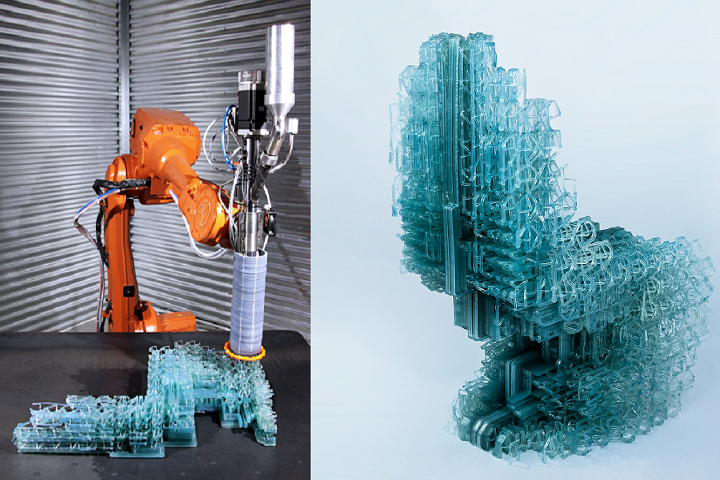
Versatile
HDPE has a range of useful properties that make it extremely useful in everyday applications. Its strength, corrosion resistance and non-toxicity make it ideal for containing food both commercially and domestically. Being a stiff and shatter-resistant plastic with a high melting point also gives it multiple industrial applications in plumbing and construction.
Recyclable
One of the most sought-after qualities in modern plastics is the recyclability. With everyone becoming more environmentally conscious, HDPE could once again become a useful material in low-emissions, reusable manufacturing in the 3D printing industry.
Disadvantages of HDPE 3D Printing
Requires High Heat
Conversely, HDPE’s high melting point also makes it very difficult to print, requiring very high heat to melt the filament. HDPE 3D printing filaments require a consistent nozzle temperature of up to 260°C, and bed temperature as high as 130°C, to get good results and avoid malfunctions.
Difficult Bed Adhesion
One of the biggest barriers to success when printing with HDPE is the bed adhesion difficulty. If the material does not stick to the base plate, there is no solid foundation on which to build the layers for your part, increasing the risk of deformities.
High Shrinkage and Warp Potential
HDPE died out as a mainstream filament in large part to its tendency to shrink and warp during the cooldown process. This has ruined many a project. As other polymers emerged like PLA emerged with much easier aftercare requirements, HDPE faded into obscurity.
Is There a Future for HDPE in 3D Printing?
The slow demise of HDPE as a mainstream 3D printing filament has been sad to see. But it does beg the question of whether it could once again experience a resurgence in the industry.
While it is likely that HDPE will never again become the aspirational focus of 3D printing as it continues to develop, it is very possible that it could once more carve out a distinct place in the market for one key reason.
Many of the 3D printable thermoplastics currently on the market like PLA, ABS, or Nylon, while being very popular, are not widely recyclable, and many local recycling sites around the world do not accept them. It is possible for individuals to recycle these materials themselves, but it is not as easy as it could be to recycle filaments. HDPE is a key exception to that rule.
In fact, there are a number of services that specialize in recycling HDPE containers into filaments for resale. This is a major advantage in HDPE’s favour as the world’s attitude to plastic waste and environmental issues continues to evolve.
And with governments and private corporations committing got being more environmentally friendly, it is only a matter of time before the additive manufacturing industry begins to follow suit. Single-use plastics will begin to be phased out in favour of greener alternatives, and HDPE will surely see a resurgence with this trend.
While it possesses a number of drawbacks that put it at a disadvantage in comparison to other similar competitors, in just a few short years, expect to see a high density of demand for HDPE.
Can You 3D Print Polyethylene
Affiliate Disclaimer: Some of the product links on this page are affiliate links. We may recieve commission if you purchase something after using one of these links, but using these links will never affect the price you pay.What is Polyethylene?
An introduction to HDPE
3D Printing with HDPE
HDPE pros and cons
Is HDPE recyclable?
Where to buy HDPE filament
What’s the difference between HDPE and PET?
3D Printing with PETG
PETG pros and cons
Where to buy PETG filament
Polyethylene is a form of thermoplastic that is widely used in a variety of different forms. It can be categorised into a few forms such as Low-Density Polyethylene (LDPE), High-Density Polyethylene (HDPE) and as a polymer Polyethylene terephthalate (PET).
It is extremely recyclable and is widely used in various forms in everyday objects such as plastic bottles and milk cartons.
You can 3D print Polyethylene, with HDPE and PET being the two most common forms of Polyethylene filament. The filament itself is normally used with FDM 3D printers and has some unique pros and cons for why you should or shouldn’t use it.
An introduction to HDPE
HDPE is the form of Polyethylene that is commonly used in milk cartons and drink bottles. Unlike PET, HDPE isn’t completely clear and is slightly opaque. It does feature a really good amount of strength compared to its weight. This allows HDPE objects to float in water.
You can 3D print HDPE, but it does come with some challenges, which is why it isn’t widely used as a 3D printer filament.
3D Printing with HDPE
While 3D printing with HDPE is very similar to ABS, it does present a number of challenges. HDPE requires you to have a relatively high nozzle temperature between 220°C and 260°C. While many home 3D printers will be able to achieve this heat, some won’t so double check if your printer nozzle can achieve this heat.
While many home 3D printers will be able to achieve this heat, some won’t so double check if your printer nozzle can achieve this heat.
The same heat issue applies to your print bed. To achieve the most success you will also require a hot print bed to give your 3D printed object the best chance of adhering.
The main problem that high-density Polyethylene suffers from is a lack of adhesion. This is why you require a hot print bed. However, you can also run into problems caused by the layers not correctly adhering to each other during the 3D printing process.
You need to ensure your print bed is as stable as possible, and it is recommended that you print at a slower speed for the best chances of success.
You will also need to be aware of your 3D print shrinking while cooling. This occurs specifically with HDPE, but can cause warping or cracking if it happens too fast. It would be better to ensure the ambient temperature isn’t too cold during the printing process.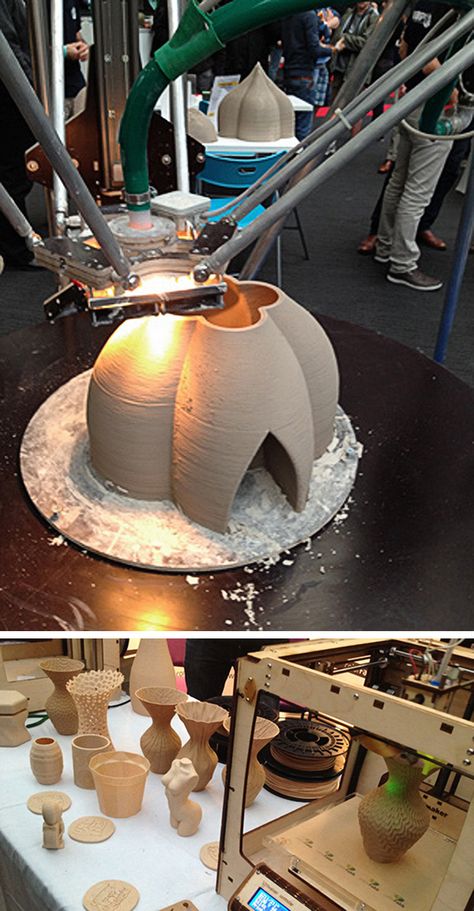 And allow your HDPE 3D print to adjust to cooler temperatures slowly.
And allow your HDPE 3D print to adjust to cooler temperatures slowly.
Once fully printed and cooled though, HDPE will have similar characteristics to ABS. Although it will be slightly stronger and more lightweight.
HDPE pros and cons
Pros
- Great strength – HDPE is stronger than other filaments such as ABS. Due to its fantastic strength to density ratio, it can produce strong 3D printed objects without too much excess weight and filament usage.
- Extremely lightweight – As mentioned above, HDPE has a fantastic strength to density ratio. The lightweight nature of HDPE allows it to be light enough to float in water.
- Not water-soluble – HDPE can be completely watertight, and doesn’t dissolve in water. This makes it great for applications such as holding liquids or use with water-based objects.
- Dissolves in Limonene – Despite being non-water-soluble, HDPE does dissolve when exposed to Limonene.

- Recyclable – Polyethylene is highly recyclable. You can shred larger plastic items to recycle HDPE or other types of Polyethylene, and reuse them again.
Cons
- Harder to 3D print with – HDPE has a high melting temperature meaning it has the requirement of a hotter extruder nozzle and print bed.
- Hard to come by – Due to its tricky nature when being used as a 3D printer filament, HDPE can be hard to find and purchase.
- Can warp when printing – HDPE suffers from low adhesion, making it fairly tricky to achieve successful 3D prints. You can often find layers won’t fully adhere to each other which in turn can make your 3D print warp.
- Shrinks when cooling – During the cooling process directly after 3D printing, HDPE will shrink slightly. This can affect and compromise the strength of your final 3D printed object.
Is HDPE recyclable?
High-density Polyethylene is widely recyclable, making it a fantastic filament to 3D print with.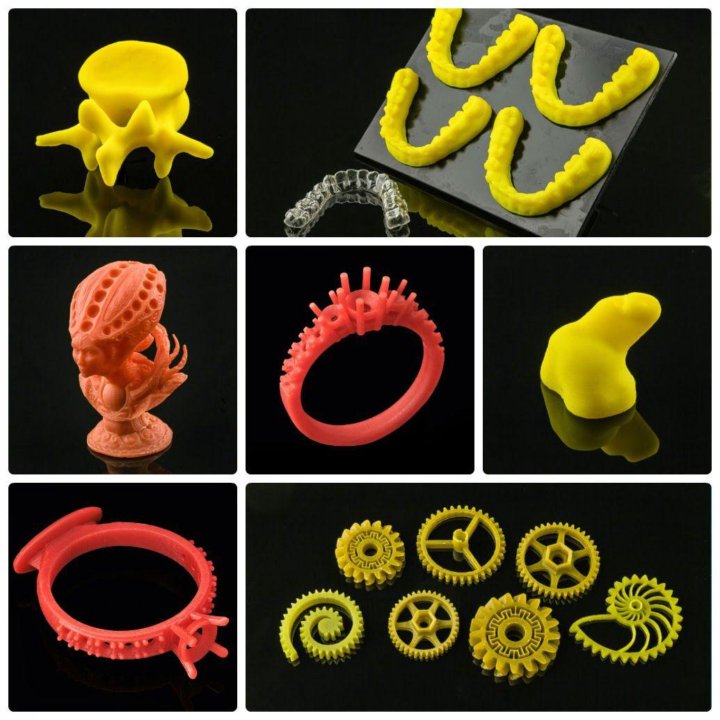 While you can’t recycle HDPE yourself, you can send it off for recycling where it will be cleaned, shredded into pellets and reformed.
While you can’t recycle HDPE yourself, you can send it off for recycling where it will be cleaned, shredded into pellets and reformed.
Where to buy HDPE filament
As mentioned, HDPE is extremely hard to come by due to not many people 3D printing with it. However, you can purchase PETG (Polyethylene Terephthalate combined with Glycol) which has similar characteristics to HDPE.
Buy PETG from 3D Jake
Buy PETG from Amazon
What’s the difference between HDPE and PET?
PET (Polyethylene Terephthalate) is a much more commonly used form of Polyethylene. Although PET isn’t overly used in its raw form, PETG is widely used. PETG is Polyethylene Terephthalate combined with Glycol. This modification removes some of the negative features of raw PET and also makes the filament clear once printed.
3D Printing with PETG
Much like HDPE, PETG is widely used in plastics and water bottles and is actually one of the most commonly used types of plastic. It is quite strong and durable when compared to PLA, and it has good impact resistance.
It is quite strong and durable when compared to PLA, and it has good impact resistance.
Unlike HDPE, PETG doesn’t shrink as it cools, making it much easier to 3D print. It behaves very similar to ABS, with good strength and flexibility, and it is slightly easier to 3D print with compared to ABS.
PETG pros and cons
Pros
- Good strength – Similar strength to ABS filament.
- Flexible – While not entirely flexible, PETG does have improved flexibility over PLA, making it more durable over time, and more likely to maintain its form under heavy load.
- Transparent – Due to the added Glycol, PETG is almost entirely transparent, making it perfect for water bottles.
- Waterproof – Much like HDPE, PETG is also waterproof. This allows you to 3D print entirely watertight objects.
Cons
- Bad adhesion – Unfortunately, much like HDPE, PETG also suffers from a lack of adhesion.
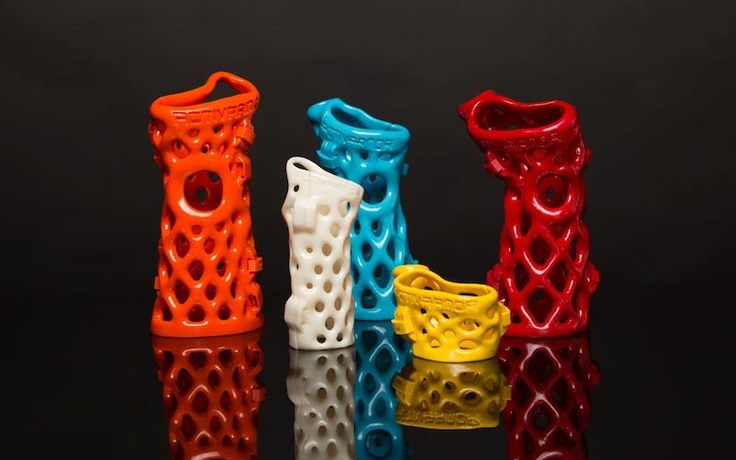 This can make 3D printing with it slightly harder than PLA.
This can make 3D printing with it slightly harder than PLA.
Where to buy PETG filament
PETG is one of the most widely used 3D printing filaments. It sits alongside PLA and ABS as one of the big three filament types. This makes it readily accessible and easy to find.
Buy PETG from 3D Jake
Buy PETG from Amazon
Learn about other 3D printing materials in our complete 3D printing material guide.
Experimental printing of HDPE caps for plastic containers. HDPE + ABS, what happens?
Consumables
Follow author
Follow
Don't want
12
Hello!
Since my first videos I have been asked to print with PET lids. This is HDPE low pressure polyethylene. I have already tried printing with this material. Did not work out
Especially for you I will try again
There are gaskets inside the covers, we need to get rid of them. Katerina happily agreed to throw out 2-3 hours for this entertaining event.
Finally they will find their peace, transforming into into another object.
I fall asleep, grind, enjoy the crushed material.)
When crushed, this material releases heat up to almost 50 degrees.
Large pieces I will leave for the next experiments. For press machine.
In past videos, you probably saw that everything ended in failure..
I also did not use the broach table. The filament is already stretched stably. The thread turned out to be very strong, but without much hardness. it
is already alarming me.
The diameter is slightly smaller than the standard, but that's not a problem. In the slicer, you can put any diameter
Printing with such materials is simply difficult.
I'll try a PLA substrate. I'll try to reduce the speed to a minimum and set the airflow. The bottom was printed very badly, but
up..
In general, nothing good with
this did not work. Although, I got the result in order to be aware of the problem in the future.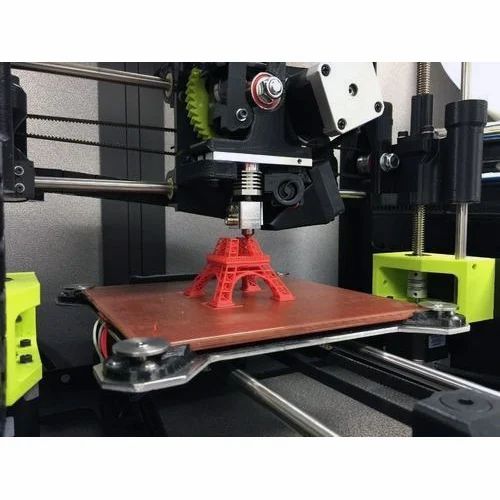
I'll try mixing it with ABS. Will anything come of it at all? The filament is very beautiful, with a gray tint.
I propose to see all the subtleties in my video.
God bless you! Be healthy! See you!
filament experiment HDPE bottle caps
Follow author
Follow
Don't want
12
More interesting articles
25
Subscribe to the author
Subscribe
Don't want
Buttermilk for a catapult, or shaggy carbon
My next visit to research print.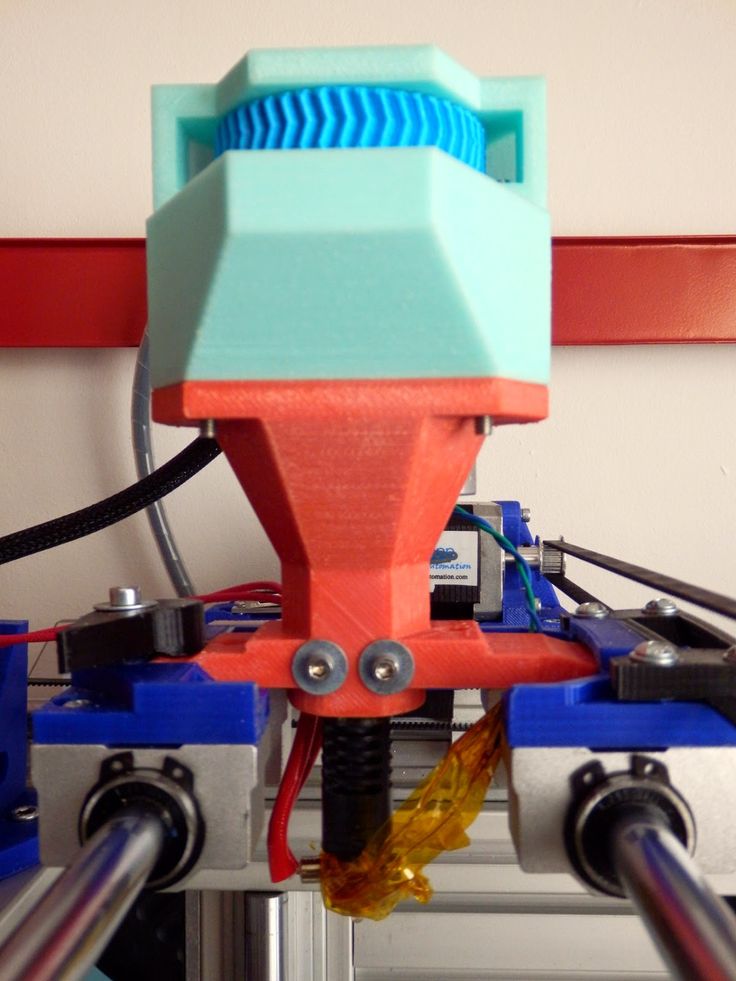 ..
..
Read more
four
Follow author
Subscribe
Don't want
About two weeks ago I received a new item - three-color PLA plastic from Eryone....
Read more
236
Subscribe to the author
Subscribe
Don't want
Good day, dear 3Dtoday readers!)
Everyone already knows that the company...
Read more
3D printing materials / Articles
Share:
Source
FFF technology has many advantages, including the relative simplicity of the design of printers and the affordability of both devices and consumables. Moreover, the range of materials is perhaps the widest among all available technologies.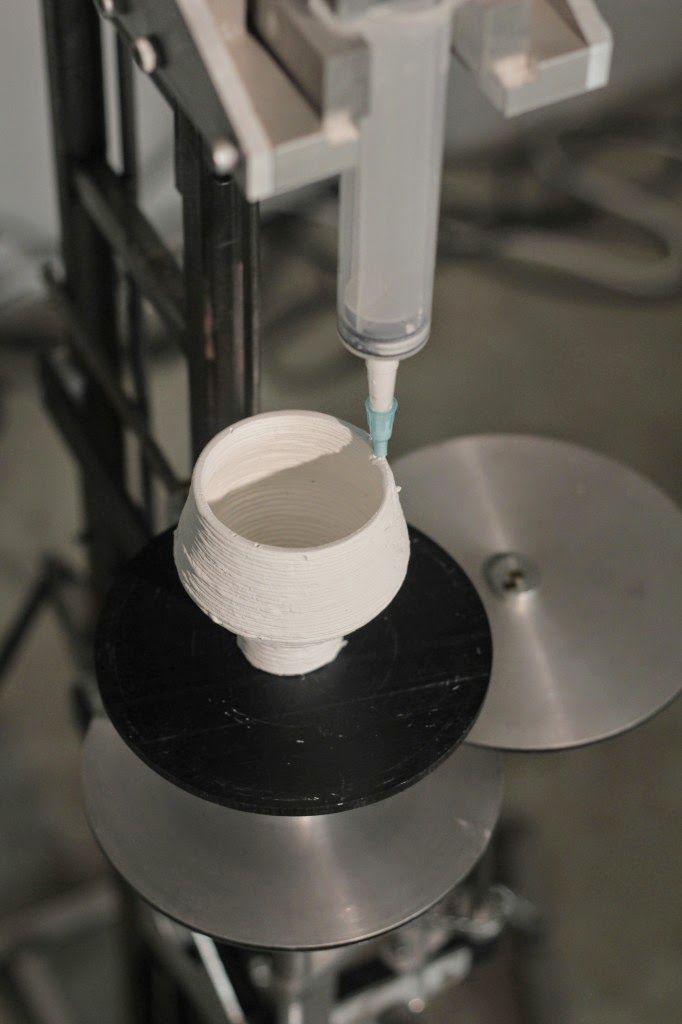 As a rule, thermoplastics are used for printing, but there are exceptions - composite materials containing various additives, but based, again, on thermoplastics. In this section, we will try to talk about the most widely used materials in more detail, starting with the most popular types.
As a rule, thermoplastics are used for printing, but there are exceptions - composite materials containing various additives, but based, again, on thermoplastics. In this section, we will try to talk about the most widely used materials in more detail, starting with the most popular types.
Polylactide (PLA)
Polylactide is one of the most widely used thermoplastics due to several factors. Let's start with the fact that PLA is known for its environmental friendliness. This material is a lactic acid polymer, which makes PLA a completely biodegradable material. The raw materials for the production of polylactide are corn and sugar cane. At the same time, the environmental friendliness of polylactide causes its fragility. Plastic easily absorbs water and is relatively soft. As a rule, PLA models are not intended for functional use, but serve as designer models, souvenirs and toys. Few practical industrial applications include the production of food packaging, drug containers and surgical sutures, as well as use in bearings that do not carry high mechanical loads (for example, in modeling), which is possible due to the material's excellent slip coefficient.
One of the most important factors for 3D printing applications is the low melting temperature of only 170-180°C, which contributes to relatively low power consumption and the use of inexpensive brass and aluminum nozzles. As a rule, extrusion is carried out at 160-170°C. At the same time, PLA solidifies quite slowly (glass transition temperature is about 50°C), which should be taken into account when choosing a 3D printer. The best option is a device with an open case, a heated work platform (to avoid deformation of large models) and, preferably, additional fans to cool the fresh layers of the model.
PLA has low shrinkage, i.e. loss of volume on cooling, which helps to prevent warping. However, shrinkage has a cumulative effect as the dimensions of printed models increase. In the latter case, the build platform may need to be heated to evenly cool the printed objects.
The cost of PLA is relatively low, which adds to the popularity of this material.
Acrylonitrile butadiene styrene (ABS)
ABS plastic is perhaps the most popular thermoplastic used in 3D printing, but not the most common. This contradiction is explained by certain technical difficulties that arise when printing ABS. The desire of craftsmen to use ABS is determined by the excellent mechanical properties, durability and low cost of this material. In industry, ABS plastic is already widely used: the production of car parts, cases of various devices, containers, souvenirs, various household accessories, etc.
This contradiction is explained by certain technical difficulties that arise when printing ABS. The desire of craftsmen to use ABS is determined by the excellent mechanical properties, durability and low cost of this material. In industry, ABS plastic is already widely used: the production of car parts, cases of various devices, containers, souvenirs, various household accessories, etc.
ABS plastic is resistant to moisture, acids and oil, has a fairly high temperature resistance - from 90°C to 110°C. Unfortunately, some types of material are destroyed by direct sunlight, which somewhat limits the application. At the same time, ABS plastic is easy to paint, which allows you to apply protective coatings on non-mechanical elements.
Despite a relatively high glass transition temperature of around 100°C, ABS has a relatively low melting point. Actually, due to the amorphous nature of the material, ABS does not have a melting point, as such, but 180 ° C is considered an acceptable temperature for extrusion, which is on the same level as the above-described PLA.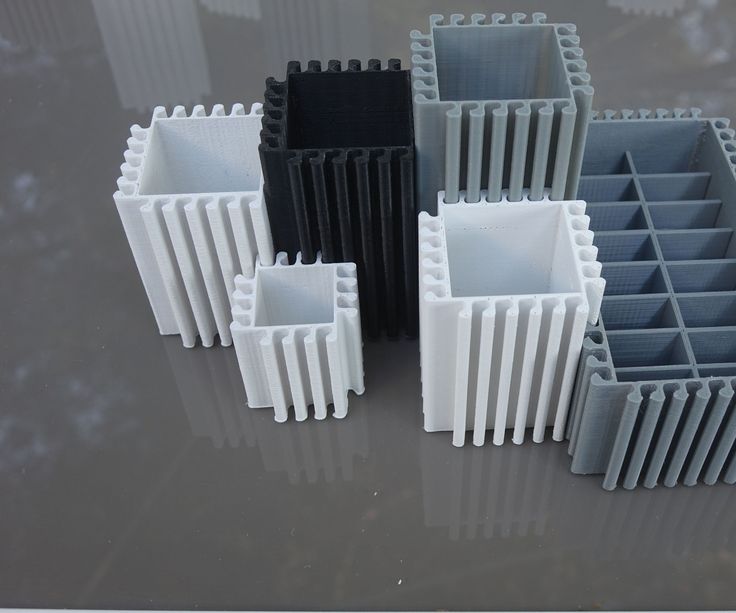 The lower temperature spread between extrusion and glass transition allows ABS to cure faster than PLA.
The lower temperature spread between extrusion and glass transition allows ABS to cure faster than PLA.
The main disadvantage of ABS plastic can be considered a high degree of shrinkage during cooling - the material can lose up to 0.8% of its volume. This effect can lead to significant deformations of the model, twisting of the first layers and cracking. To combat these unpleasant phenomena, two main solutions are used. First, heated work platforms are used to help reduce the temperature gradient between the lower and upper layers of the model. Secondly, ABS 3D printers often use closed housings and control of the background temperature of the working chamber. This makes it possible to maintain the temperature of the applied layers at a level just below the glass transition threshold, reducing the degree of shrinkage. Full cooling is carried out after receiving the finished model.
The relatively low stickiness of ABS may require additional bonding aids such as adhesive tape, polyimide film, or applying a solution of ABS in acetone to the platform just prior to printing.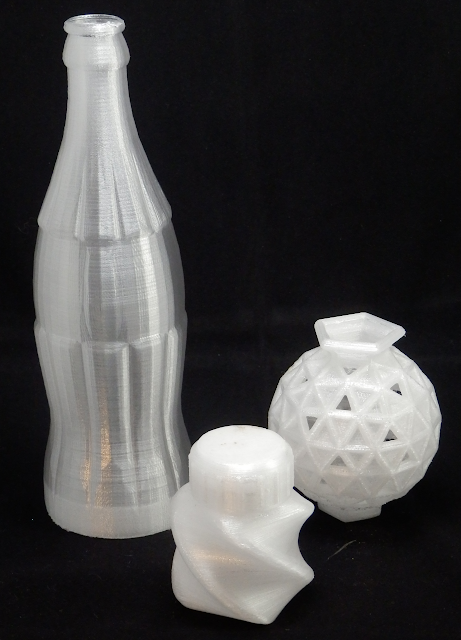 For more information on how to avoid warping, see How to Avoid Warping 3D Printed Models.
For more information on how to avoid warping, see How to Avoid Warping 3D Printed Models.
While ABS does not pose a health risk at room temperature, heating plastic releases acrylonitrile fumes, a poisonous compound that can irritate mucous membranes and cause poisoning. Although the amount of Acrylonitrate produced in small scale printing is negligible, it is recommended that you print in a well ventilated area or use an exhaust hood. It is not recommended to use ABS plastic for the production of food containers and utensils (especially for storing hot food or alcoholic beverages) or toys for small children.
The good solubility of ABS in acetone is very useful, as it allows large models to be produced piece by piece and then glued together, greatly expanding the capabilities of inexpensive desktop printers.
Polyvinyl alcohol (PVA)
Polyvinyl alcohol is a material with unique properties and special applications. The main feature of PVA is its water solubility. 3D printers equipped with dual extruders have the ability to print models with PVA support structures. Upon completion of printing, the supports can be dissolved in water, leaving a finished model that does not require mechanical or chemical roughening. Similarly, PVA can be used to create water-soluble master patterns for molds and molds themselves.
3D printers equipped with dual extruders have the ability to print models with PVA support structures. Upon completion of printing, the supports can be dissolved in water, leaving a finished model that does not require mechanical or chemical roughening. Similarly, PVA can be used to create water-soluble master patterns for molds and molds themselves.
The mechanical properties of PVA are quite interesting. At low humidity, plastic has high tensile strength. With increasing humidity, strength decreases, but elasticity increases. The extrusion temperature is 160-175°C, which allows the use of PVA in printers designed for printing with ABS and PLA plastics.
Since the material easily absorbs moisture, it is recommended to store PVA plastic in dry packaging and, if necessary, dry before use. Drying can be done in a pottery kiln or an ordinary oven. As a rule, drying of standard coils takes 6-8 hours at a temperature of 60-80°C. Exceeding 220°C will cause the plastic to decompose, which should be taken into account when printing.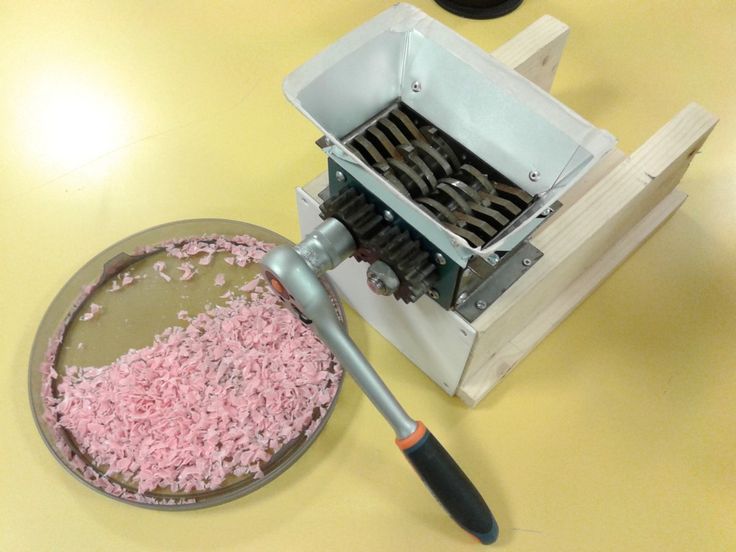
Nylon
Nylon is attractive due to its high wear resistance and low coefficient of friction. Thus, nylon is often used to coat friction parts, which improves their performance and often allows them to function without lubrication. Following the widespread use of nylon in industry, additive manufacturing has also become interested in the material. Attempts to print with nylon have been made almost since the early days of FDM/FFF technology.
In reality, there are several types of nylon produced by different methods and with slightly different characteristics. The most famous is nylon-66, created by the American company DuPont in 1935. The second most popular option is nylon-6, developed by BASF to circumvent the DuPont patent. These two options are very similar. In terms of 3D printing, the main difference is the melting point: Nylon-6 melts at 220°C, while Nylon-66 melts at 265°C.
Many hobbyists prefer to use commercially available nylon threads such as trimmer wire. The diameter of such materials often corresponds to the diameter of standard FFF materials, which makes their use tempting. At the same time, these products are usually not pure nylon. In the case of trimmer rods, the material consists of nylon and fiberglass for an optimal combination of flexibility and rigidity.
The diameter of such materials often corresponds to the diameter of standard FFF materials, which makes their use tempting. At the same time, these products are usually not pure nylon. In the case of trimmer rods, the material consists of nylon and fiberglass for an optimal combination of flexibility and rigidity.
Fiberglass has a high melting point, and therefore printing with such materials is fraught with high nozzle wear and plugging.
Recently there have been attempts to commercially develop nylon-based printing materials specifically for FDM/FFF applications, including Nylon-PA6 and Taulman 680. These grades are extrudable at 230-260°C.
Since nylon readily absorbs moisture, store consumables in vacuum packaging or at least in a container with water-absorbent materials. A sign of excessively damp media will be steam escaping from the nozzle during printing, which is not dangerous, but may degrade the quality of the model.
When printing with nylon, it is not recommended to use a polyimide desktop coating as the two materials fuse together.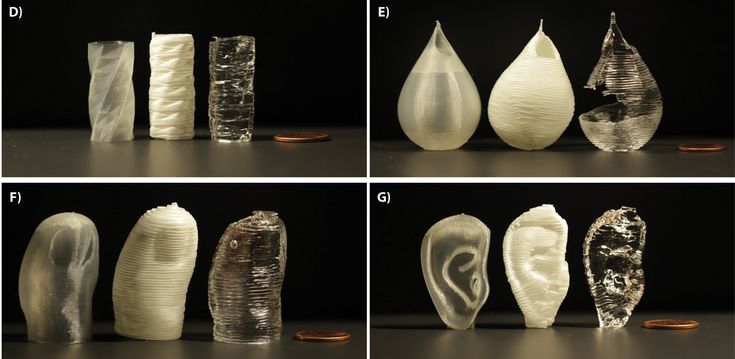 As a coating, you can use adhesive tape with wax impregnation (masking tape). The use of a heated bed will help reduce the possibility of deformation of the model, similar to printing with ABS plastic. Due to the low coefficient of friction of nylon, extruders with studded feeders should be used.
As a coating, you can use adhesive tape with wax impregnation (masking tape). The use of a heated bed will help reduce the possibility of deformation of the model, similar to printing with ABS plastic. Due to the low coefficient of friction of nylon, extruders with studded feeders should be used.
The nylon layers have excellent adhesion, which minimizes the chance of delamination of models.
Nylon is difficult to bond, making it difficult to print large multi-piece models. Alternatively, fusion of parts is possible.
Since nylon can release toxic fumes when heated, we recommend that you print in a well-ventilated area or use an exhaust fan.
Polycarbonate (PC)
Polycarbonates are attractive due to their high strength and toughness, as well as resistance to high and low temperatures.
The potential health risk of printing is worth noting: the toxic and potentially carcinogenic compound bisphenol A is often used as a raw material. .
.
The extrusion temperature depends on the printing speed to avoid cracking, but the minimum temperature at 30mm/sec can be considered as 265°C. When printing, the use of polyimide film is recommended for better adhesion to the desktop surface. The high susceptibility of polycarbonate to deformation requires the use of a heated platform and, if possible, a closed housing with heating of the working chamber.
Polycarbonate is highly hygroscopic (easily absorbs moisture), which requires storage in dry conditions to avoid the formation of bubbles in the applied layers. For extended printing in humid climates, even the print spool may need to be stored in a moisture-proof container.
High density polyethylene (HDPE)
Arguably the most common plastic in the world, polyethylene is relatively rare among 3D printed materials. The reason for this is the difficulty in layer-by-layer manufacturing of models.
Polyethylene melts easily (130-145°C) and hardens quickly (100-120°C), as a result of which the applied layers often do not have time to set. In addition, polyethylene is characterized by high shrinkage, which provokes the twisting of the first layers and the deformation of the models as a whole during uneven solidification. Printing with polyethylene requires the use of a heated platform and a working chamber with accurate temperature control to slow down the cooling of the applied layers. In addition, you will need to print at high speed.
In addition, polyethylene is characterized by high shrinkage, which provokes the twisting of the first layers and the deformation of the models as a whole during uneven solidification. Printing with polyethylene requires the use of a heated platform and a working chamber with accurate temperature control to slow down the cooling of the applied layers. In addition, you will need to print at high speed.
Difficulties in use are more than offset by the cheapness and availability of this material. Recently, several devices have been developed for processing plastic waste from HDPE (bottles, food packaging, etc.) into standard filaments for printing on FDM/FFF printers. Examples are FilaBot and RecycleBot. Due to the simplicity of design, RecycleBot devices are often assembled by 3D craftsmen.
Melting polyethylene releases harmful vapors, so it is recommended to print in well-ventilated areas.
Polypropylene (PP, PP)
Polypropylene is a widely used plastic used in the production of packaging materials, dishes, syringes, pipes, etc.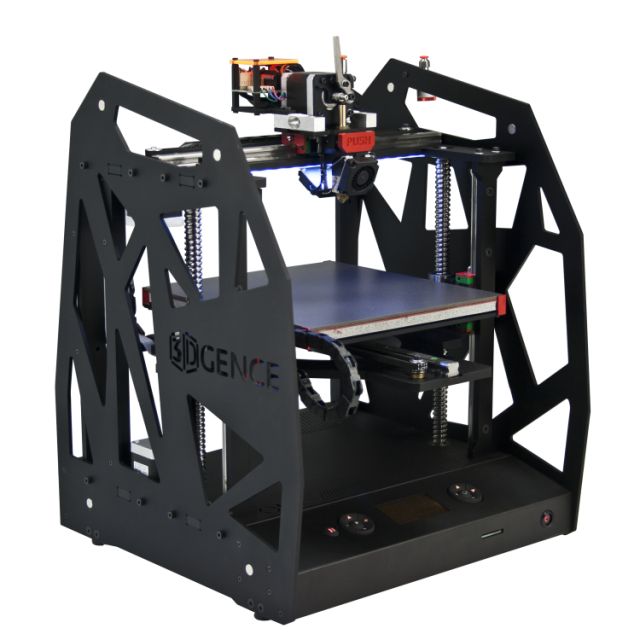 The material has a low specific gravity, is non-toxic, has good chemical resistance, is resistant to moisture and wear, and is quite cheap. Among the disadvantages of polypropylene, one can note the vulnerability to temperatures below -5 ° C and to direct sunlight.
The material has a low specific gravity, is non-toxic, has good chemical resistance, is resistant to moisture and wear, and is quite cheap. Among the disadvantages of polypropylene, one can note the vulnerability to temperatures below -5 ° C and to direct sunlight.
The main difficulty in printing with polypropylene is the high shrinkage of the material during cooling - up to 2.4%. For comparison, the shrinkage of the popular but already problematic ABS plastic reaches 0.8%. Although polypropylene adheres well to cold surfaces, it is recommended to print on a heated platform to avoid deformation of models. The minimum recommended extrusion temperature is 220°C.
Polypropylene printing filaments are sold by Orbi-Tech, German RepRap, Qingdao TSD Plastic. Stratasys has developed a polypropylene simulant optimized for 3D printing called Endur.
Polycaprolactone (PCL)
Polycaprolactone (aka Hand Moldable Plastic, Mold-Your-Own Grips, InstaMorph, Shapelock, Friendly Plastic, Polymorph, Polymorphus, Ecoformax) is a biodegradable polyester with an extremely low melting point of about 60°C.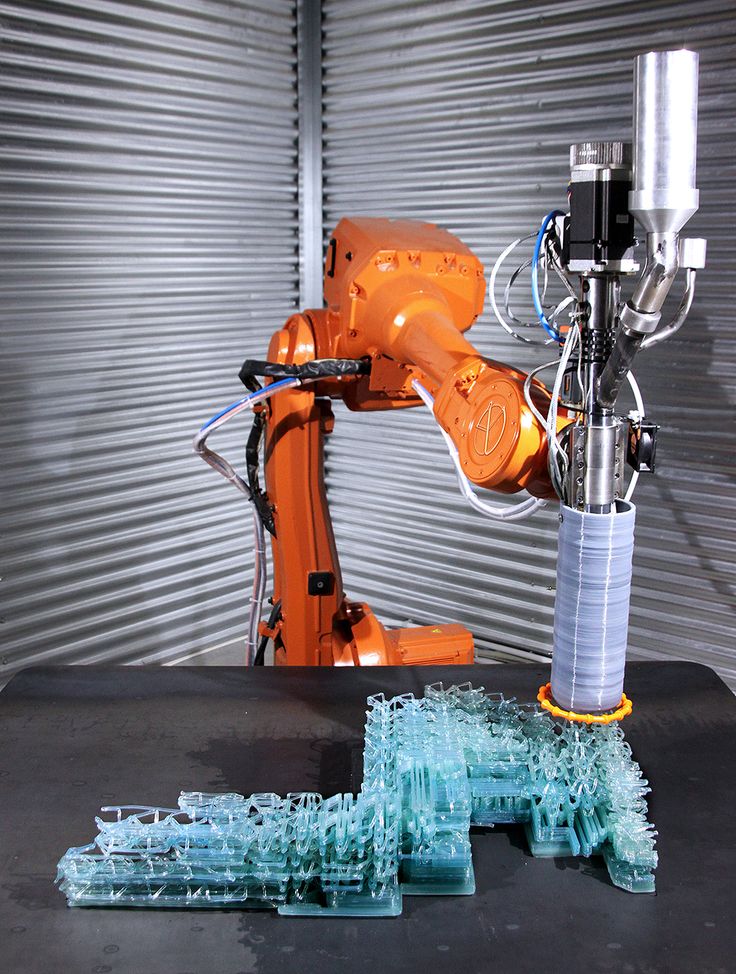 In practice, this property creates certain problems in 3D printing, since not all 3D printers can be configured to work at such low temperatures. Heating polycaprolactone to the usual extrusion temperatures (about 200°C) causes a loss of mechanical properties and may lead to breakage of the extruder.
In practice, this property creates certain problems in 3D printing, since not all 3D printers can be configured to work at such low temperatures. Heating polycaprolactone to the usual extrusion temperatures (about 200°C) causes a loss of mechanical properties and may lead to breakage of the extruder.
Polycaprolactone is non-toxic, making it suitable for use in the medical industry and biodegradable. When ingested, polycaprolactone breaks down, which makes printing with this material safe. Due to the low melting point, there is no danger of burns when touching fresh models. The high plasticity of the material makes it possible to reuse.
Polycaprolactone is not suitable for creating functional mechanical models due to its viscosity (glass transition temperature is -60°C) and low heat resistance (melting point is 60°C). On the other hand, this material is perfect for the production of mock-ups and food containers.
The material sticks easily to the surface of even a cold working table and is easy to paint.
Polyphenylsulfone (PPSU)
Polyphenylsulfone is a high-strength thermoplastic widely used in the aviation industry. The material has excellent chemical and thermal stability and practically does not burn. Polyphenylsulfone is biologically inert, which makes it possible to use this material for the production of tableware and food containers. Operating temperature range is -50°С - 180°С. Plastic is resistant to solvents and fuels and lubricants.
For all its merits, polyphenylsulfone is rarely used in 3D printing due to its high melting point, reaching 370°C. Such extrusion temperatures are beyond the power of most desktop printers, although printing is theoretically possible using ceramic nozzles. Currently, the only active user of the material is Stratasys, which offers industrial Fortus installations.
Polymethylmethacrylate (Acrylic, Plexiglas, Acrylic, PMMA)
Polymethyl methacrylate is a well-known organic glass. The material is durable, moisture resistant, environmentally friendly, easy to glue, plastic enough and resistant to direct sunlight.
The material is durable, moisture resistant, environmentally friendly, easy to glue, plastic enough and resistant to direct sunlight.
Unfortunately, acrylic is not suitable for FDM/FFF printing for a number of reasons. Acrylic is poorly stored in the form of spools of thread, as constant mechanical stress leads to the gradual destruction of the material. To avoid bubbles, the print resolution must be high, with a precision almost impossible for home printers. Acrylic's rapid curing requires strict environmental control of the working chamber and high print speeds. Again, the print speeds of FDM/FFF printers are inversely related to print resolution, which exacerbates the problem.
However, attempts are being made to print with acrylic, and some of them are producing relatively positive results. However, when creating sufficiently strong models, it is not yet possible to avoid the formation of bubbles and achieve the usual transparency of the material. At the moment, the best results with acrylic are shown by another printing technology - multi-jet modeling (MJM) from 3D Systems. In this case, a photopolymer version of acrylic is used. Stratasys has also made significant progress using its own photopolymer acrylic simulant VeroClear on Objet Eden printers. It is hoped that the high demand for acrylic will lead to the emergence of composite materials based on polymethyl methacrylate, designed specifically for FDM/FFF printing.
In this case, a photopolymer version of acrylic is used. Stratasys has also made significant progress using its own photopolymer acrylic simulant VeroClear on Objet Eden printers. It is hoped that the high demand for acrylic will lead to the emergence of composite materials based on polymethyl methacrylate, designed specifically for FDM/FFF printing.
Polyethylene terephthalate (PET, PET)
Polyethylene terephthalate - this complex name hides a material used for the production of plastic bottles and other food and medical containers.
The material has a high chemical resistance to acids, alkalis and organic solvents. The physical properties of PET are also impressive with high wear resistance and tolerance to a wide temperature range from -40°C to 75°C. Among other things, the material is easily machined.
Printing with PET is somewhat problematic due to the relatively high melting point of up to 260°C and significant cooling shrinkage of up to 2%. Using PET as a consumable requires approximately the same conditions as printing with ABS.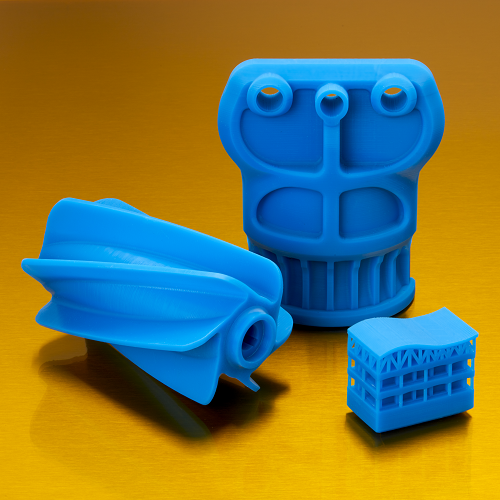
Achieving transparency of models requires rapid cooling to pass the glass transition threshold of 70°C - 80°C.
The material has become the focus of attention of 3D craftsmen using used containers as raw materials for home production of 3D printing consumables. Recycling devices such as FilaBot or RecycleBot are used to make threads.
High impact polystyrene (HIPS)
High impact polystyrene is widely used in industry for various household products, building materials, disposable tableware, toys, medical instruments, etc.
When 3D printed, polystyrene shows physical properties very similar to the popular ABS -plastic, which makes this material more and more popular among 3D craftsmen. The most attractive feature of polystyrene is the difference from ABS in terms of chemical properties: polystyrene is quite easily amenable to the organic solvent Limonen. Since Limonene has no effect on ABS plastic, it is possible to use polystyrene as a material for building soluble support structures, which is extremely useful when building complex, interlaced models with internal supports. Compared to the convenient, water-soluble polyvinyl alcohol (PVA) plastic, polystyrene compares favorably with relatively low cost and resistance to humid climates that make PVA difficult to work with.
Compared to the convenient, water-soluble polyvinyl alcohol (PVA) plastic, polystyrene compares favorably with relatively low cost and resistance to humid climates that make PVA difficult to work with.
Be aware that some ABS manufacturers mix slightly cheaper polystyrene into their consumables. Accordingly, models made from such materials can be dissolved in Limonene along with supporting structures.
When polystyrene is heated to extrusion temperature, toxic fumes can be released, so printing in a well-ventilated area is recommended.
Wood simulants (LAYWOO-D3, BambooFill)
LAYWOO-D3 is a recent development for printing wood-like models. The material consists of 40% natural wood chips of microscopic size and 60% binder polymer. The LAYWOO-D3 is very easy to handle, being virtually warp-free and does not require the use of a heated platform. According to the manufacturers, the polymer is non-toxic and completely safe.
The unique material properties allow for different visual results when printing with different nozzle temperatures. The operating temperature range is 180°C-250°C. As the extrusion temperature increases, the shade of the material becomes progressively darker, allowing it to simulate different types of wood or annual rings.
The operating temperature range is 180°C-250°C. As the extrusion temperature increases, the shade of the material becomes progressively darker, allowing it to simulate different types of wood or annual rings.
Finished models are excellent for mechanical processing - grinding, drilling, etc. In addition, the products are easily painted, and unpainted models even have a characteristic woody smell.
Unfortunately, the cost of the material is almost four times higher than the price of popular materials such as PLA and ABS plastics. As popularity is projected to grow, the material should become more accessible.
Alternative materials are currently being developed and tested, such as BambooFill from the Dutch company ColorFabb.
Sandstone Simulators (Laybrick)
Composite from inventor Kai Parti, responsible for the revolutionary LAYWOO-D3 wood simulant. This time, Kai set his sights on sandstone imitation, using a tried and tested method of mixing a binder with a filler, in this case mineral.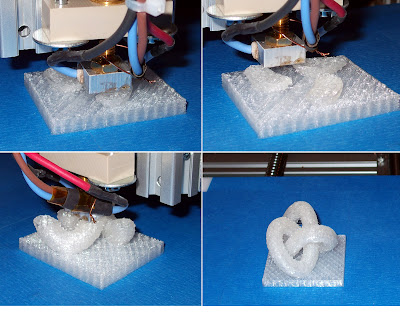
Laybrick allows you to produce objects with different surface textures. At low extrusion temperatures of the order of 165°C-190°C, the finished products have a smooth surface. Increasing the printing temperature makes the material rougher, up to a high degree of resemblance to natural sandstone at extrusion temperatures above 210°C.
The material is easy to work with no need to heat the work platform, does not show significant deformation when shrinking and does not produce toxic fumes when heated. The only drawback can be considered a rather high cost of the material, which is largely due to limited production.
Metal Simulators (BronzeFill)
Metals have attracted additive manufacturing enthusiasts since the early days of 3D printing technology. Unfortunately, printing with pure metals and alloys causes a lot of difficulties that are insurmountable for most 3D printing methods. Fully functional metal products can only be produced using technologies such as SLS, DLMS or EBM, which require the use of industrial plants that cost hundreds of thousands of dollars.